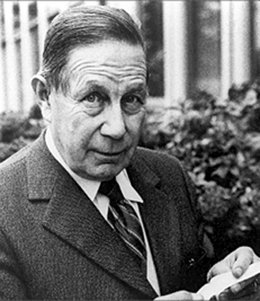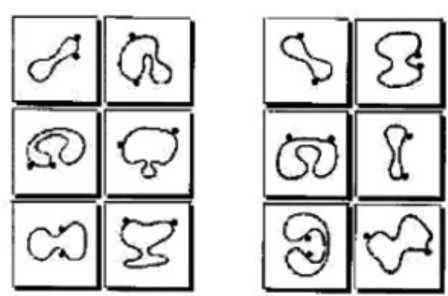Shifting perception and the invention of velcro
George de mestral creative inventor of velcro
George de Mestral was inspired to improve the zipper. He thought about the essence of zippers which is to fasten two separate pieces of fabric together. His question became “How do things fasten?” He became committed to the idea of inventing a better fastener and spent considerable time pondering how things fasten in other domains including nature.
One day when George was hunting birds with his Irish pointer, he traveled through some burdock thistles. The prickly seed burrs from the plants clung to his clothing and to his dog. While pulling off the burrs he noticed how they were removable yet easily reattached.
Making Connections
Velcro in nature
When you are committed and start to actively work on a problem that you are passionate about, you will start to notice more and more things that relate to what you are working on. With an infinite amount of stimuli constantly hitting our brains, we need the ability to filter that which is most relevant to us. And our mind is that filter. Often these connections can seem like coincidences, but cognitive scientists tell us it is simply that part of our brain that screens out information we are not interested in and focuses on the things that we can use. These connections give you different ways to look at information and different ways to focus on it.
It was George’s creative perception that recognized the common factor between a burdock that fastens and a zipper that fastens, not logic.
Mestral velcro patent
The burdock fascinated George and he imagined a fastener that mimicked a burdock. He studied the burrs under a microscope and discovered a hook system used by the burdock plant to migrate its seeds by attachment. The hooks could grab onto loops of thread or fur and migrate with the object it fastened itself to. This gave him the idea of creating a hook and loop fastener.George envisioned two fabrics that could attach in this manner with one having a surface covered with minuscule hooks and another with hoops. Most of the experts he visited did not believe hooks could be created on the surface of fabric. However, he found a weaver at a textile plant that was willing to work with him. George discovered that a multifilament yarn weaved from velvet or cotton terry cloth created a surface of hooped threads. To create hooks, George would partially cut the hoops so they would become hooks. There was a great deal of experimentation to get the right density, thread sizes and rigidity. He eventually weaved the hook-side yarn from nylon and invented Velcro.
Creativity, Perception and Pattern Recognition
It was not logic that guided George's thinking process but perception and pattern recognition between two totally unrelated subjects: zippers and burdocks. Logic dictates that burdocks are animate plants and zippers are inanimate manmade objects that are totally unrelated and, therefore, any relationship between the two is to be excluded. It was George’s creative perception that recognized the common factor between a burdock that fastens and a zipper that fastens, not logic.
Cognitive scientists understand the importance of perception and pattern recognition as a major component of creative thinking. Russian computer scientist, Mikhail Bongard, created a remarkable set of visual pattern recognition problems. The Bongard problems present two sets of relatively simple diagrams, say A and B. All the diagrams from set A have a common factor or attribute, which is lacking in all the diagrams of set B. The problem is to find, or to formulate, convincingly, the common factor.
The Bongard Perception Test
Test your perception and pattern recognition skills and try to solve the problem Bongard problem below. You have two classes of figures (A and B).
You are asked to discover some abstract connection that links all the various diagrams in A and that distinguishes them from all the other diagrams in group B.One has to take chances that certain aspects of a given diagram matter, and others are irrelevant. Perhaps shapes count, but not sizes — or vice versa. Perhaps orientations count, but not sizes — or vice versa. Perhaps curvature or its lack counts, but not location inside the box — or vice versa. Perhaps numbers of objects but not their types matter — or vice versa. Which types of features will wind up mattering and which are mere distractors. As you try to solve the problem, you will find the essence of your mental activity is a complex interweaving of acts of abstraction and comparison, all of which involve guesswork rather than certainty. By guesswork I mean that one has to take a chance that certain aspects matter and others do not.
Logic dictates that the essence of perception is the activity of dividing a complex scene into its separate constituent objects and attaching separate labels to the now separated parts of pre-established categories, such as ovals, Xs and circles as unrelated exclusive events. Then we’re taught to think exclusively within a closed system of hard logic.
In the above patterns, if you were able to discern the distinction between the diagrams, your perception is what found the distinction, not logic. The distinction is the ovals are all pointing to the X in the A group, and the ovals area all pointing at the circles in the B group.
Thought Experiment
The following thought experiment is an even more difficult problem, because you are no longer dealing with recognizable shapes such as ovals, Xs, circles or other easily recognizable structures for which we have clear representations. To solve this, you need to perceive subjectively and intuitively, make abstract connections, much like Einstein thought when he thought about the similarities and differences between the patterns of space and time, and you need to consider the overall context of the problem.
Again, you have two classes of figures (A and B) in the Bongard problem. You are asked to discover some abstract connection that links all the various diagrams in A and that distinguishes them from all the other diagrams in group B.
Scroll down for the answer
ANSWER: The rule is the “dots” in A are on the same side of the neck.
Summary
When passionate to find a solution to a problem, look for ideas in domains you are not always used to looking in
Shift perception and let your mind explore wild possibilities that might seem a bit crazy at first
Look for patterns and combine disparate ideas, objects and possibilities
Creativity isn't a logical process, so embrace divergent thinking approaches when navigating complex problem solving
Further Reading
THOMAS EDISON’S CREATIVE THINKING HABITS





